Table of Contents
Overview – Upper Limb Innervation
Upper limb innervation is primarily supplied by the brachial plexus, a network of nerves formed by spinal nerve roots C5–T1. These nerves provide motor and sensory innervation to the shoulder, arm, forearm, and hand. Understanding the anatomical layout and functional distribution of these nerves is critical for interpreting upper limb weakness, sensory loss, and diagnosing nerve lesions such as carpal tunnel syndrome.
Definition
Upper limb innervation refers to the neural control of muscles and sensory regions in the upper limb, mostly derived from the brachial plexus (C5–T1). The nerves emerging from this plexus are responsible for voluntary movement, reflexes, and sensory feedback from the arm and hand.
Brachial Plexus Structure
| Level | Components |
|---|---|
| Roots | C5, C6, C7, C8, T1 (ventral rami) |
| Trunks | Superior (C5-C6), Middle (C7), Inferior (C8-T1) |
| Divisions | Each trunk splits into anterior and posterior |
| Cords | Lateral, Posterior, Medial |
| Branches | Terminal nerves arising from the cords: |
| – Anterior division: Musculocutaneous, Median, Ulnar | |
| – Posterior division: Radial, Axillary |
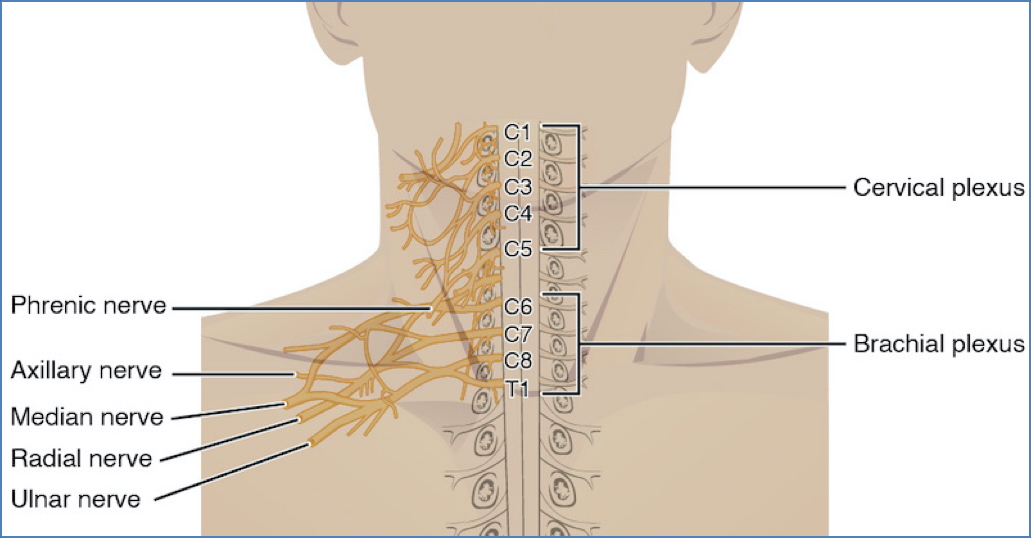

2. Gray, Public domain, via Wikimedia Commons
Major Peripheral Nerves of the Upper Limb
Musculocutaneous Nerve (Anterior Division)
| Attribute | Detail |
|---|---|
| Origin | Lateral cord of brachial plexus |
| Pathway | Runs down anterior arm |
| Motor Supply | Biceps brachii, Brachialis, Coracobrachialis |
| Sensory Supply | Skin over anterolateral forearm |

Median Nerve (Anterior Division)
| Attribute | Detail |
|---|---|
| Origin | Lateral and medial cords |
| Pathway | Anterior arm → forearm → through carpal tunnel to hand |
| Motor Supply | Flexor compartment of forearm (except FCU & part of FDP) |
| Thenar muscles, Lumbricals 1 & 2 | |
| Sensory Supply | Lateral 2/3 of palm, palmar digits 1–3 and half of 4th digit |
Muscles innervated:
- Palmaris longus
- Flexor carpi radialis
- Flexor digitorum superficialis
- Lateral half of flexor digitorum profundus
- Flexor pollicis longus
- Pronator teres, pronator quadratus
- Thenar muscles
- Lumbricals 1 & 2

Ulnar Nerve (Anterior Division)
| Attribute | Detail |
|---|---|
| Origin | Medial cord of brachial plexus |
| Pathway | Medial arm → behind medial epicondyle → along ulna to hand |
| Motor Supply | FCU, medial FDP, most intrinsic hand muscles |
| Sensory Supply | Medial 1/3 of hand (palmar & dorsal aspects) |
Intrinsic hand muscles innervated:
- Adductor pollicis
- Flexor digiti minimi brevis
- Abductor digiti minimi
- Opponens digiti minimi
- Lumbricals 3 & 4
- Interossei

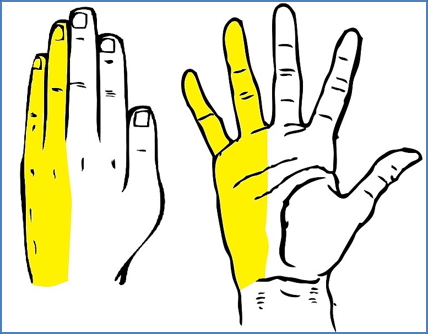
2.Clker Free Vector Images, CC BY-SA 4.0 <https://creativecommons.org/licenses/by-sa/4.0>, via Wikimedia Commons
Axillary Nerve (Posterior Division)
| Attribute | Detail |
|---|---|
| Origin | Posterior cord of brachial plexus |
| Pathway | Passes posterior to humeral neck |
| Motor Supply | Deltoid, Teres minor |
| Sensory Supply | Skin over shoulder and joint capsule |
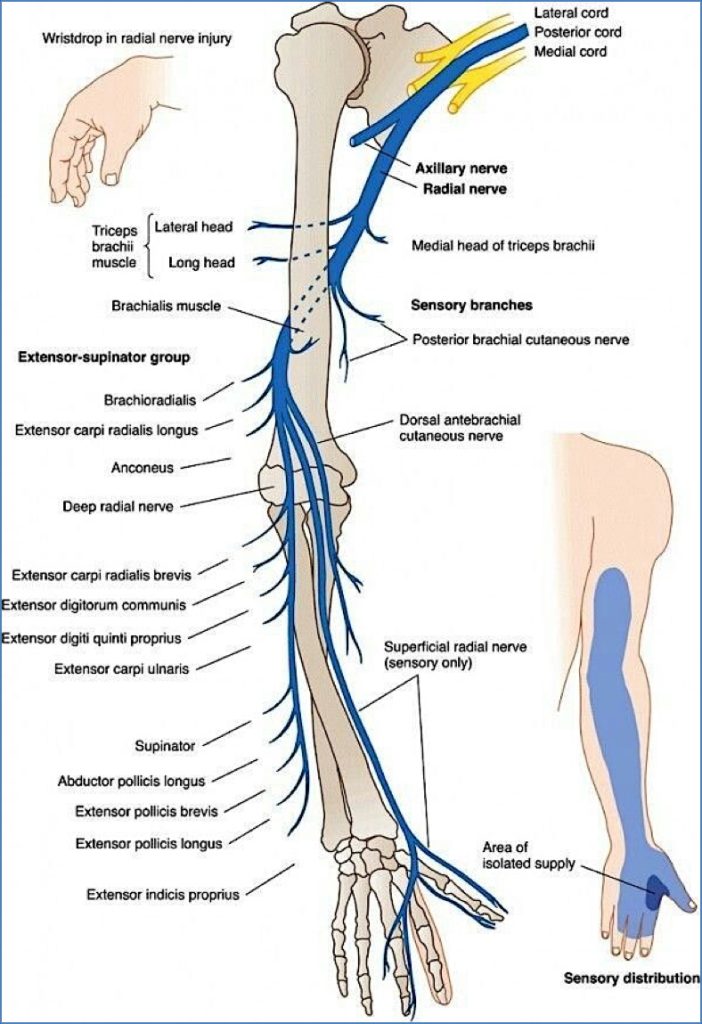
Radial Nerve (Posterior Division)
| Attribute | Detail |
|---|---|
| Origin | Posterior cord of brachial plexus |
| Pathway | Posterior arm → radial groove → anterior lateral epicondyle → forearm |
| Motor Supply | All extensor muscles of arm, forearm, and hand |
| Sensory Supply | Posterior/lateral arm, forearm, dorsum of hand (except digits 2 & 3 tips) |
Muscles innervated include:
- Triceps brachii, Anconeus
- Supinator, Brachioradialis
- Extensor carpi radialis (longus & brevis), Extensor carpi ulnaris
- Abductor pollicis longus
- Extensor pollicis (longus & brevis), Extensor indicis
- Extensor digitorum, Extensor digiti minimi
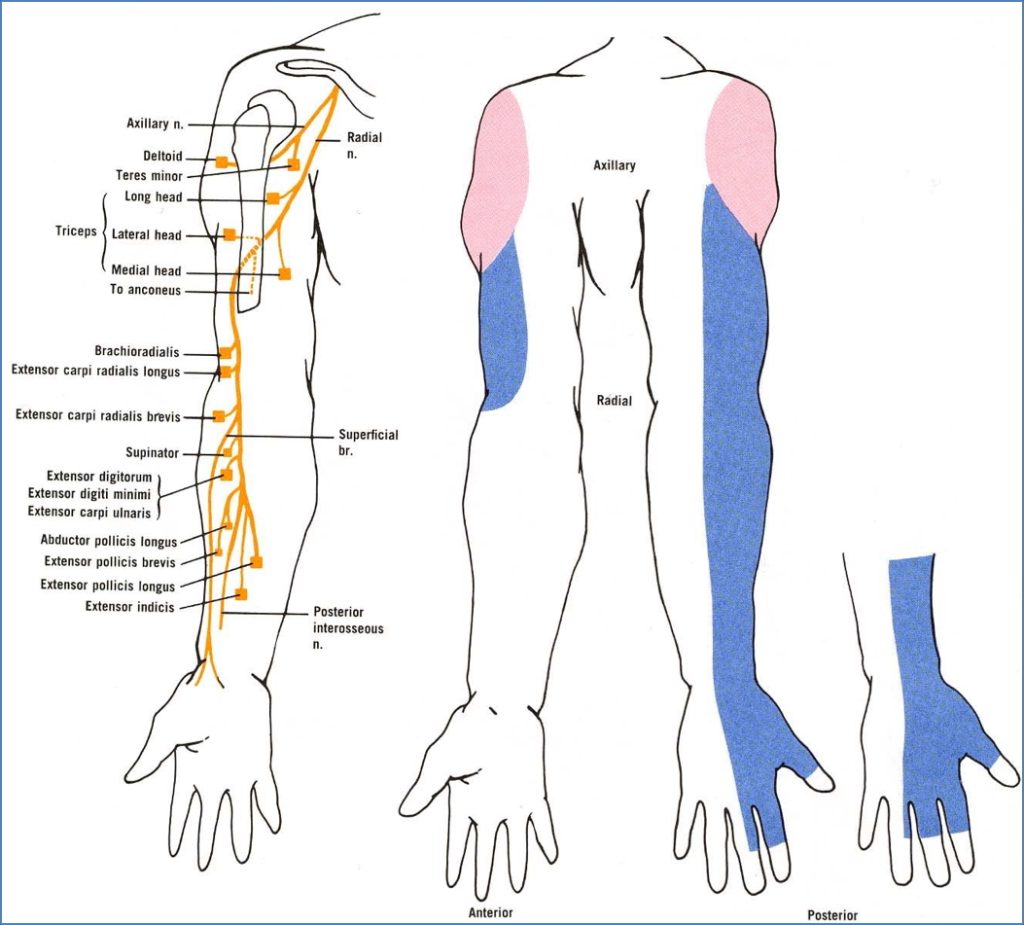
Carpal Tunnel
The carpal tunnel is a narrow passageway in the wrist that allows nine tendons and the median nerve to enter the hand. Compression here leads to carpal tunnel syndrome, which affects the median nerve distribution.

Nerve Lesions
Afferent (Sensory) Lesions
- Loss of cutaneous sensation
- Absent spinal reflexes
- Paraesthesia (tingling, itching, pain)
Efferent (Motor) Lesions
- Paralysis or muscle weakness
- Flaccid tone
- Loss of reflexes
- May be complete or partial
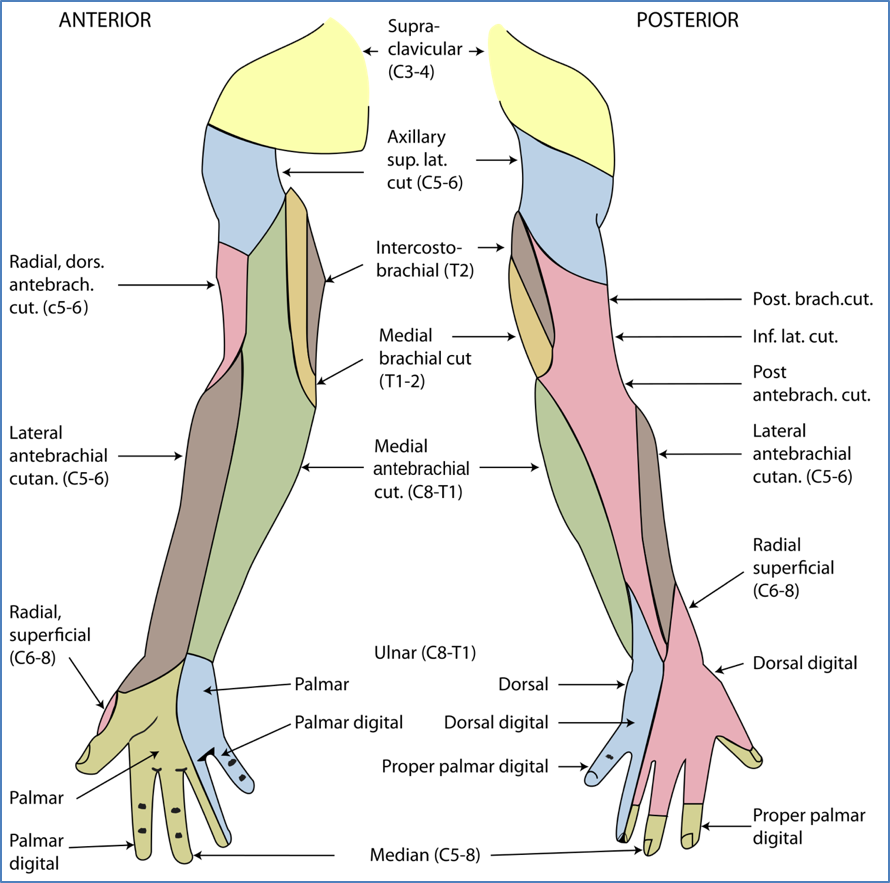
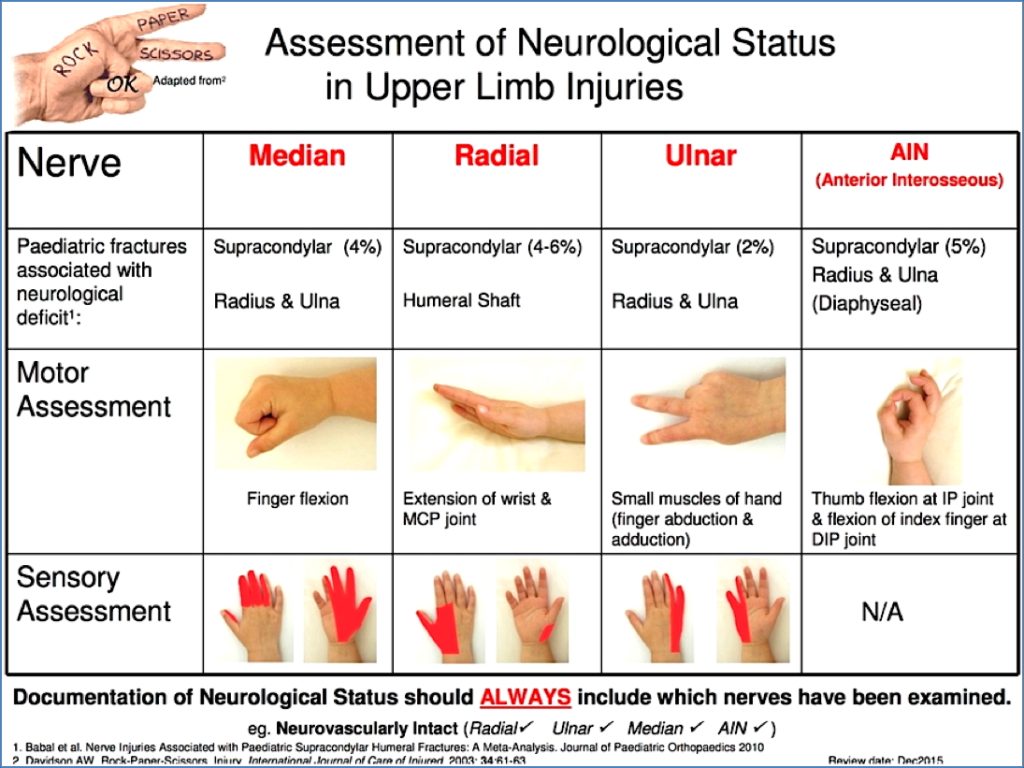
2. Davidson AW; Rock-paper-scissors, Injury, International Journal of Care of Injured
Summary – Upper Limb Innervation
Upper limb innervation is primarily delivered by branches of the brachial plexus (C5–T1). Each major nerve serves specific muscle groups and skin regions, with clinical relevance to common conditions like nerve palsies and carpal tunnel syndrome. Accurate anatomical understanding aids in diagnosis and management of neuromuscular disorders. For more on the musculoskeletal system, see our Musculoskeletal Overview page.